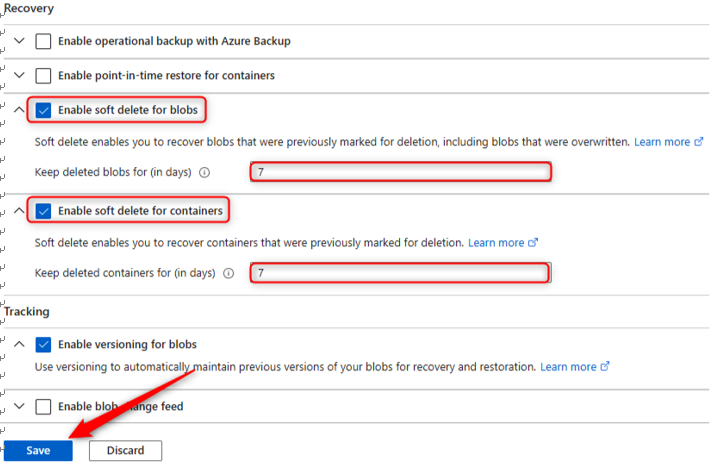Deleting a life cycle management rule
You may want to delete a life cycle management rule. The following steps will guide you through the process of doing so:
- Open a storage account with a life cycle management rule configured and click the Lifecycle management button on the storage menu.
- Hover over the rule you would like to modify and note a checkbox appears to the left of it. Click this.
Figure 7.41 – Selecting a rule
- Note the top menu bar now provides the option to disable or delete the rule. Disabling will stop the rule from applying until enabled again and deleting will remove the rule permanently. Click Delete.

Figure 7.42 – Deleting a rule
That brings us to the end of the blob life cycle management section. In the next section, we will explore blob data protection.
Top Tip
Automated data tiering moves blobs to cooler tiers or deletes them. Associated actions within a single rule must follow a transitive implementation from hotter tiers to cooler tiers.
Configuring blob data protection
In the following exercise, you will explore configuring soft delete options as part of the data protection options available to you:
- Navigate to the Azure portal by opening https://portal.azure.com.
- Go to a storage account. On the left menu, under theData management context,click Data protection. Select the options under the Recovery context for Enable soft delete for blobsand Enable soft delete for containers. Set both periods to 7 days and click Save.

Figure 7.43 – Blob data protection
- You will receive a success notification indicating that the setting has taken effect.

Figure 7.44 – Success notification
You now know how to configure blob data protection settings on your storage accounts. In the next section, we have provided additional reading material for the configuration of storage replication and life cycle management.
Further reading
That brings an end to this section. We have learned about storage replication and life cycle management.
We encourage you to read up on the topic further by using the following links:
• Azure File Sync services: https://docs.microsoft.com/en-us/azure/ storage/file-sync/file-sync-introduction
• Configuring object replication: https://docs.microsoft. com/en-gb/azure/storage/blobs/object-replication-configure?tabs=portal
• Blob versioning: https://docs.microsoft.com/en-gb/azure/ storage/blobs/versioning-overview
• Blob life cycle management: https://docs.microsoft.com/en-us/ azure/storage/blobs/storage-lifecycle-management-concepts?tabs=azure-portal
• Blob data protection overview: https://docs.microsoft.com/en-us/ azure/storage/blobs/data-protection-overview
Summary
In this chapter, we covered how to manage the security of storage within Azure by integrating storage with VNets, using private endpoints, working with SAS tokens, and configuring access and authentication. You also learned how to configure storage replication and blob life cycle management. You now have the skills to secure and manage Azure Storage.
In the next chapter, we will work through some labs to enhance your new skills for storage management and work through practical applications of storage.